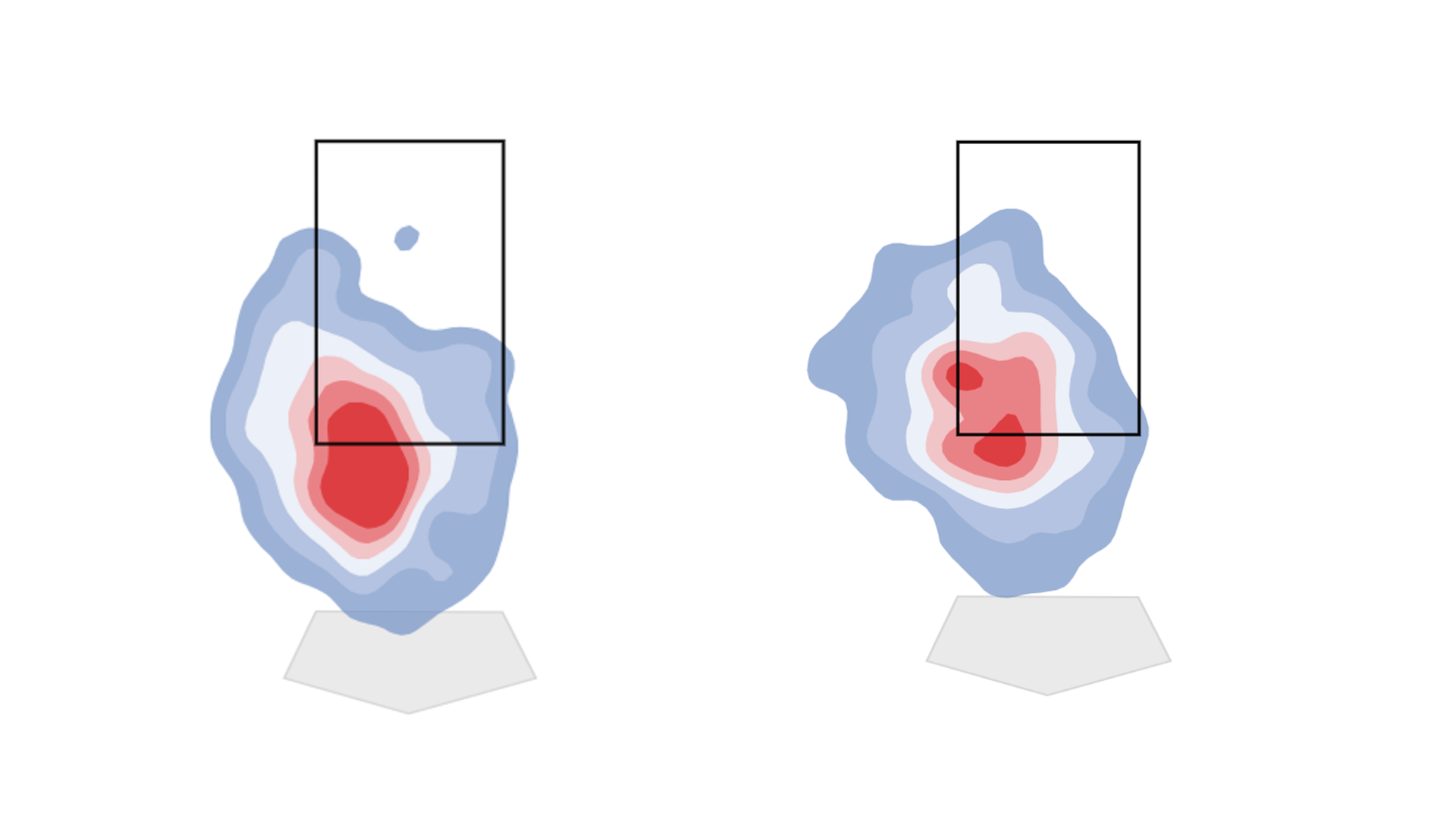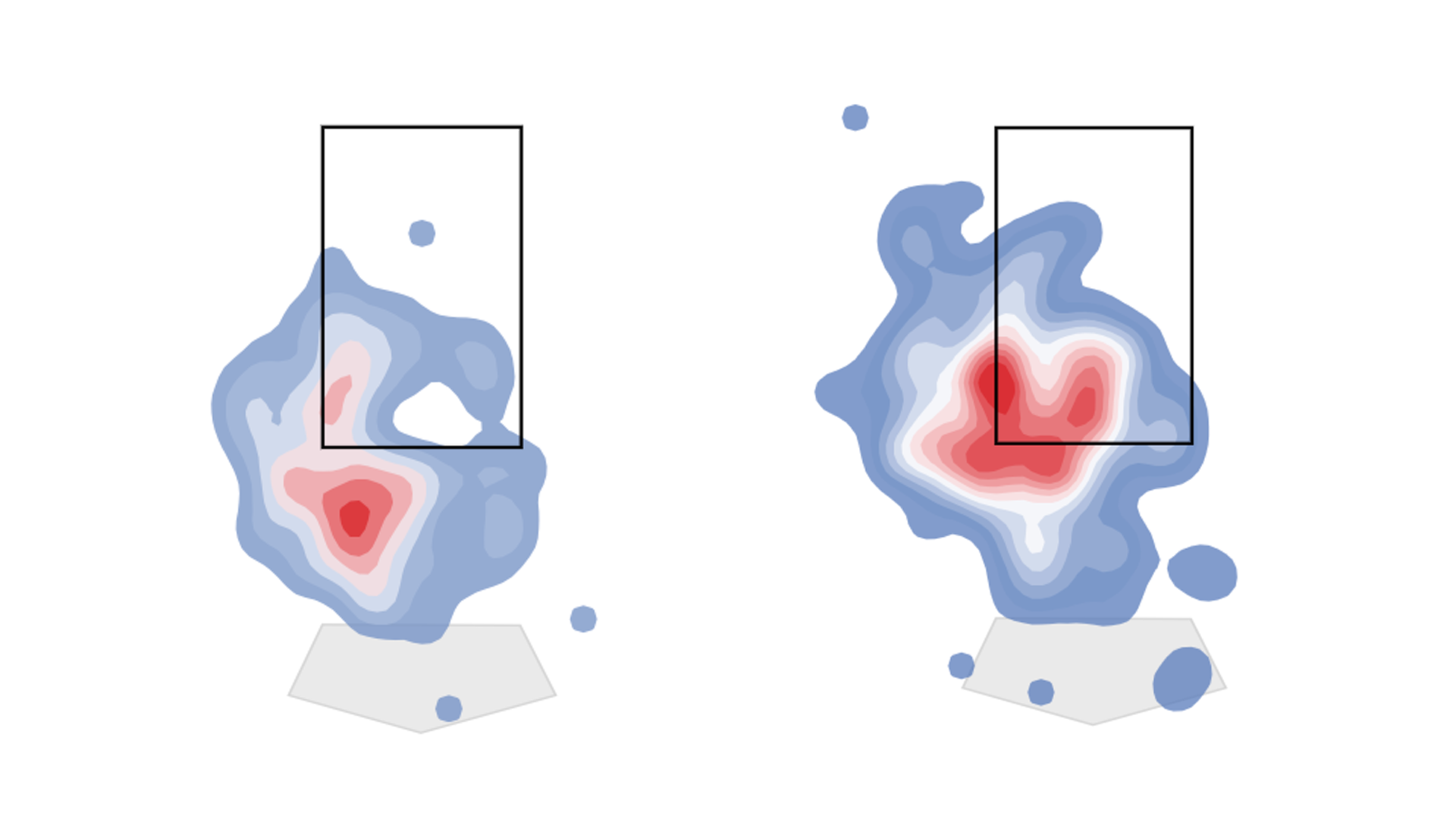© 2025 ALLCITY Network Inc.
All rights reserved.

In some ways, Zac Gallen was everything the Diamondbacks could have hoped for in 2022. He bounced back from an injury-plagued 2021 season with a 12-4 with a 2.54 ERA, a National League-leading 0.91 WHIP and the lowest opponent batting average by a qualified starting pitcher in Diamondbacks history at .185.
The man once viewed by scouts as a back-of-the-rotation starter finished fifth in NL Cy Young voting. There is a strong case that he should have finished even higher.
Perhaps even more remarkable than Gallen’s numbers, however, is the fact that he still has significant areas for growth going into 2023. Reaching that next level has everything to do with the pitch that was once his bread and butter: the changeup.
Calling Gallen’s changeup a problem in 2022 would be overly harsh. But take a look at this chart, which shows the whiff rate on Gallen’s changeup by year in the big leagues.
After topping out at a ridiculous 43.8 percent whiff rate on his changeup in 2020, Gallen generated whiffs on just 25.3 percent of swings on his changeup in 2022.
To be fair, that’s still not bad. The whiff rate on Zach Davies’ changeup — widely regarded as one of the best in baseball — was 32.2 percent in 2022. Gallen’s changeup was decent in 2022, and not all that far from being great. But it still wasn’t the pitch we’ve seen in the past.
For the season, Gallen threw his changeup a career-low 14.2 percent of the time. By September, he was hardly throwing it at all.
Gallen’s changeup was actually quite good in April and May. The trouble started in June, when opposing hitters had higher whiff rate against it than in any other month, but also batted .385 (10-for-26) with a .731 slugging percentage when putting it in play. Those numbers were a big reason for Gallen’s 5.26 June ERA.
Diamondbacks pitching coach Brent Strom took notice and tasked Gallen with adopting a new grip over the All-Star break.
“He wasn’t getting guys on the front foot as much as we like,” Strom said. “All I did was take a page out of [Greg Maddux’s book].
“Instead of pressing the changeup into his glove, which kind of strengthened his grip, I showed him what Maddux did, where he hovers it and he doesn’t really press it in there.”
The new grip resulted in a decrease in velocity, from an average of 86.6 MPH in his last start before the All-Star break to 83.1 MPH in his first back on July 22. Gallen tossed seven scoreless innings against the Washington Nationals that day, but the revamped changeup generated an unassuming two whiffs. The results were similarly uninspiring the next two games.
“The problem we had was it got a little bit too slow,” Strom said. “He started to slow his body down a little bit.”
It’s subtle, but I think we can see what Strom is talking about if we look closely. Gallen’s follow-through here looks a tad slower and more tentative than usual. It might have been enough to give LaMonte Wade Jr. an idea of what was coming.
After staying low for a handful of outings, Gallen’s changeup velocity zig-zagged the rest of the year, averaging as high as 87.1 MPH on Sep. 11 and as low as 83.7 on Sep. 22. Opposing hitters did very little damage against it in August and September, but that is probably more a function of Gallen barely using the pitch than anything else. He threw fewer than 10 changeups in each of his last five starts of the year.
At a more granular level, Gallen’s changeup usage against lefties held fairly steady throughout the year. What really changed was his usage against righties.
I mentioned earlier that Gallen generated whiffs on about 25 percent of swings against the changeup in 2022, but what about the other 75 percent of swings? A couple of things stand out.
First, while opposing hitters didn’t make significantly more hard contact against the changeup than they have in the past, they did get the ball in the air more. The average launch angle against Gallen’s changeup increased from around four degrees each of the past two seasons to 10 degrees in 2022. Generally, a higher launch angle on an off-speed pitch is not a positive development.
The results don’t necessarily reflect that, though. Gallen had a shiny .202 opponent batting average of .202 and .333 opponent slugging percentage on the changeup this year. It is worth noting, however, that luck appears to have played a role. Both his expected batting average and expected slugging percentage on the changeup came in much higher at .245 and .403, respectively.
The other main takeaway from that other 75 percent swings on his changeup is that Gallen saw a career-high 38.8 percent of swings against the pitch end in foul balls. From a pitcher’s perspective, foul balls are not all bad. Heck, they are strikes most of the time. But they do drive up pitch counts.
If we’re nit-picking at Gallen’s fantastic in 2022, reducing pitch counts is an area for improvement. His 4.11 pitches per plate appearance in 2022 was his highest mark since his rookie season. That may come as a surprise — he set a career high with 184 innings in 2022 — but Gallen’s ability to pitch deep into games this year was more a testament to how few baserunners he allowed than his efficiency with each individual hitter.
There is also the fact that Gallen’s batted ball luck was quite good in 2022, and some regression seems inevitable. His 0.91 WHIP will be difficult to repeat, even if he does improve. Becoming more efficient would go a long way toward helping him repeat — or even increase — his innings total in 2023. Whether or not he can figures to have a significant bearing on how many Cy Young votes he accrues moving forward.
It’s one thing to recognize that Gallen’s changeup was hit more in the air and that it was fouled off more frequently. It’s another thing to explain why. There are several possibilities, all of which may have contributed slightly.
The first one is that the movement profile on Gallen’s changeup took a slight turn for the worse in 2022. Specifically, the vertical break on the pitch went from 33.4 inches in 2021 to 32.8 inches in 2022 and the horizontal break went from 12.7 inches in 2021 to 11.9 inches in 2022. Those differences are subtle — but so is the difference between getting a piece of a changeup versus swinging over the top.
The other is that Gallen’s changeup location was slightly less precise in 2022. Take a look at this comparison between Gallen’s changeup heat map in 2020 (the last year his changeup was truly great) versus 2022.

The difference is even more noticeable with two strikes, when Gallen is most likely to try to expand the zone.

The overarching theme here is that Gallen did not bury his changeup in 2022 quite as much as he has in the past. The average vertical position of his changeup was the highest of his career.
Another factor here is Gallen’s aforementioned velocity change. It wasn’t the first time in his career his changeup velocity changed noticeably. After sitting at an average of 85 MPH in his first two years in the big leagues, it spiked last year to just above 86 MPH. Back in February, I wrote about how that subtle change might have been part of the explanation for Gallen’s struggles in 2021.
It’s important to note, however, that velocity is not the end-all, be-all for changeups. Diamondbacks fans have seen that firsthand. Former ace Zack Greinke threw his changeup and four-seam fastball at nearly identical velocities, and his changeup was often his most effective pitch. Current pitcher Merrill Kelly throws a hard changeup that lags only a few ticks behind his four-seamer.
When discussing Gallen’s mid-season changeup adjustments, Strom was adamant that the velocity difference between a pitcher’s heater and changeup is not a significant factor in changeup success.
“There’s three things involved in a changeup,” he said. “There’s location, there’s ball movement and there’s arm speed. Arm speed trumps everything.”
According to Strom, Gallen’s arm speed was the biggest issue. It is also worth mentioning that the changeup is widely known as a feel pitch, the type of pitch you can throw one day but not the next. Gallen described a similar experience entering the 2021 season.
“Some days I know I can just throw it, and then some days, I don’t even know where it went,” Gallen said in an interview with Pitching Ninja. “It’s a frustrating pitch, there’s no doubt about that.”
The most noteworthy part of all of this is that Gallen didn’t really need his changeup. He threw a franchise record 44⅓ consecutive scoreless innings from Aug. 8 to Sep. 11, relying primarily as his fastball, cutter and curveball. Does he even need his changeup anymore?
“Need” is a strong word, but the fact that the changeup still graded out as a net positive in Baseball Savant’s run value suggests that nixing the pitch altogether is probably be a nonstarter. It’s a good pitch, just not a great one — yet.
A return to form for Gallen’s changeup would not only help him stave off possible regression. It could help him reach an entirely new level in 2022. And no one believes in him more than Strom.
“It’s a dream to watch him pitch and prepare,” he said. “I’ve had [guys] that had better curveballs, I’ve had guys that had better fastballs, I’ve had guys that had better changeups. But I’ve never had anybody with all four [including a cutter] that were that good.
“He’s a special cat.”
Follow Jesse Friedman on Twitter
Top photo: Joe Rondone/Arizona Republic
Get Arizona's Best Sports Content In Your Inbox!Become a smarter Arizona sports fan with the latest game recaps, analysis and exclusive content from PHNX's writers and podcasters!
Just drop your email below!
Comments
Share your thoughts
Join the conversation



